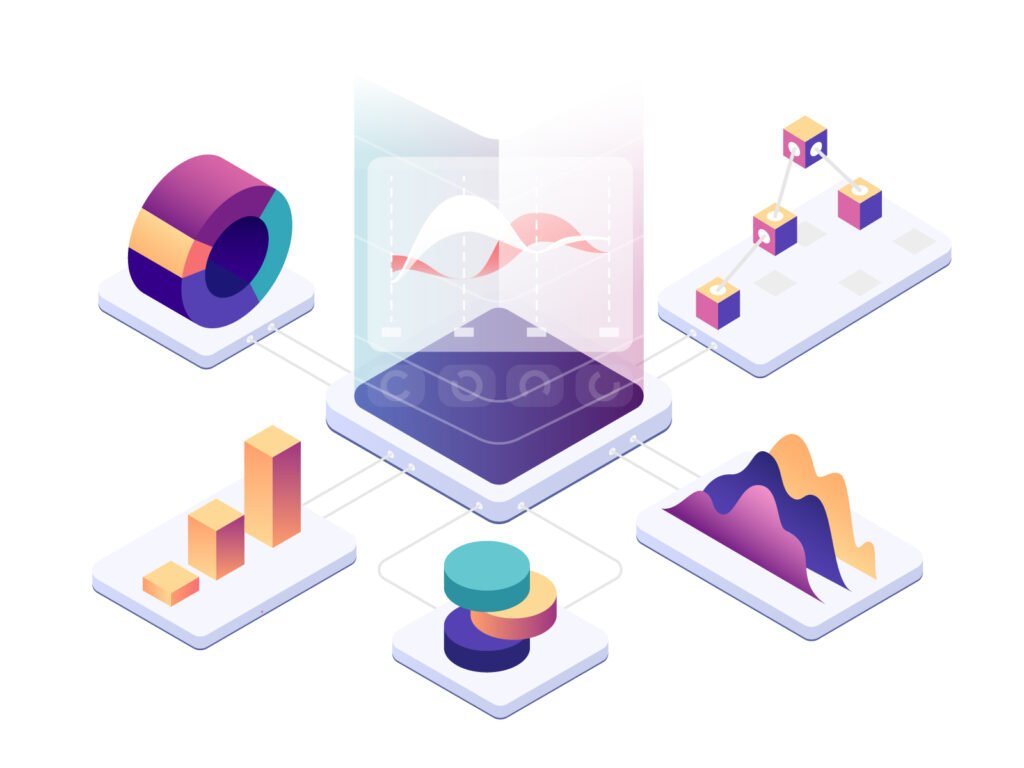
Case Study
Spatial Data Visualization for End Customers Convenience
We’re helping a global LBS company to improve spatial data visualization for advertisers, transportation and mobility service providers.
About the client
A technology company that provides innovative data services and mapping solutions, our client is listed among the world’s top 10 LBS providers. Their product portfolio comprises multilayer HD maps, mapping data visualization, integrated in-dash navigation systems for global car brands, location services for enterprises and municipalities, and a collaborative ecosystem powered by real-time location intelligence.
By digitizing reality, our client strives to make a safer and more comfortable future for us all — drivers navigating unfamiliar backroads, tourists trying to decipher the Paris metro map, or traffic incident managers executing an accident response plan using mapping data visualization.


Key features

Upload, store, and refine custom datasets

Visualize custom location-based datasets on maps

Get insights from diverse visualizations
Industry: Location-based services (LBS)
Headquarters: Amsterdam, the Netherlands
Market: Global
Team size: 4 members
Cooperation: March 2018 – present
Technologies:
Angular 4 / Node.JS / PostgreSQL / Preact / Python / Redshift / WebGL
The client came with the challenge
Nowadays, the term location intelligence is used to describe geographically related data as the basis for insightful decision-making and is applicable to virtually any business vertical. Our client provides an advanced mapping data visualization platform that exposes location intelligence including maps, geocoding, traffic, routing, POIs, and interactive map visualization. The company is constantly improving their platform as a whole and its constituent services.
Since 2015, BitsByteSoft has been involved in this improvement process on a number of workstreams including traffic feeds, public transit data, rendering, indoor maps, and GIS 3d modeling . Our client wanted to rebuild their legacy visualization component. Among their goals were boosting its performance, deployability, and extensibility and packing it with new features.
BitsByteSoft has delivered the 3D geospatial visualization services
Since March 2018, BitsByteSoft has been contributing to the development of an API toolkit for building complex geo data visualization of location-based datasets on top of maps to facilitate geospatial analysis.
Initially, BitsByteSoft set up an engineering team that extended our client’s Berlin-based development team. As the Berlin team was being migrated to other business units, BitsByteSoft engineers progressively acquired project knowledge about map visualization from them. Ultimately, it took us about two months to grow from an extension to a dedicated development team that followed the agile Kanban methodology.
The first difficulties we coped with related to the client’s IT infrastructure for GIS 3D modeling not being built on mainstream technologies like Docker for the build environment or Kubernetes for container orchestration. Although their infrastructure was based on Amazon Web Services, Puppet and some of their proprietary tools (including their own configuration application) left little room for quick deployment optimization. BitsByteSoft engineers spent a good amount of time investigating dependencies and how these tools worked together. As a result, our team improved the time-to-market value for the spatial data visualization services by optimizing deployment and production validation processes from 1.5 to 2 hours to merely 25 to 40 minutes on average.
Tackling ongoing issues of our client’s existing customers is another responsibility of the BitsByteSoft team. One of our client’s customers, a tech company offering geo-powered data services for advertisers, had problems with our client’s storage performance. Based on AWS Redshift, the data warehouse worked great with infrequent large queries for mapping visualization, but lagged when executing multiple small queries. Our task was to come up with a proof of concept comparing the throughput of AWS Redshift and AWS RDS PostgreSQL for multiple small queries. Our conclusions made our client rethink their product investment strategy. It became clear that their product audience could be extended from big businesses to small companies and individual consumers.
To implement some specific features, the BitsByteSoft mapping visualization team needed to look for non-standard technical solutions. In particular, our frontend engineers implemented a mechanism for visualizing hexagonal heatmaps. For this, we composed a query for deriving a group of points on a plane limited by the nearest hexagon in a grid. The query was written using an internal domain-specific language (DSL) that had certain limitations — for example, it was Turing incomplete. Our engineers applied a few unusual techniques to overcome the DSL limitations.
Our engineers are also dealing with Hibert curve optimization. This consists of converting a two-dimensional coordinate system into a one-dimensional system. The approach minimizes the computational effort thanks to preliminary data processing.
We’ve achieved great results together
The partnership with BitsByteSoft has enabled our client to spot new business opportunities for their location-related map visualization service. As a result, our client is considering a few investment choices. BitsByteSoft team helped our client to tap on 3D visualization GIS services.
They want to provide better integration options, so their 3D visualization GIS service is reusable by other existing and future products. In addition, our client started rebuilding their mapping visualization data sets so that small businesses and individual consumers can use them efficiently.
The solution that BitsByteSoft is helping to develop allows:
- Securely uploading, storing, and visualizing location-related customer data over fast web maps
- Transforming, aggregating, and filtering customer data on the server side (for large volumes) or on the client side (for small volumes)
- Gaining meaningful insights through 3D geospatial visualization data (static and dynamic markers, heat maps, raster maps, and more)
- Extracting latitude and longitude values from street names and postal codes due to extended geocoding capabilities

Let’s work together on your
next project
Drop us a line about your project at contact@bitsbytesoft.com or via the contact form below with attachments, and we will contact you within a business day.